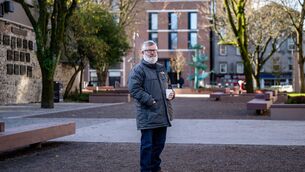Biting into a piece of our history
Kents Cavern, 2km from Torquay harbour, is part of a limestone cave system created two million years ago by underground rivers. Over the last 100,000 years wild mammals, including hyenas and sabre-toothed cats, occupied the cavern.
Graffiti on the cavern walls date from 1571 and 1688. In 1829 John MacEnery, a Catholic priest, carried out the first systematic excavation of the site. He found ancient flint tools. They were so old that stalagmites had grown over them. This evidence of ancient human presence was dismissed by the scientific community, however, because it contradicted Irish Archbishop James Ussher’s claim that God had created the world in 4004BC. Ussher had arrived at this date by adding together the ages of people in the Bible. The Genesis creation myth was regarded as fact until the late 19th Century.
In 1874, a find was made which would ultimately send Kents Cavern into the premier league of ancient sites; part of a human upper jaw-bone with three teeth was unearthed during an excavation there. The fragment, now on display at the Torquay Museum, was radio-carbon dated in 1989. The results suggested that it was between 36,400 and 34,700 years old. There was a problem, however. The carbon 14 in a sample of this age will have decayed almost to nothing and the slightest presence of other organic material would lead to an erroneous result.
Last year, scientists from both sides of the Atlantic carried out further studies on the find. Animal remains were taken from strata above and below the layer in which the jaw bone was found. Proteins known as collagens were extracted from the bones, purified and dated. The results were a revelation; the title of a paper just published on line in the journal Nature, says it all. The Earliest Evidence for Anatomically Modern Humans in Northwest Europe is by Tom Higham, of Oxford University’s Radio-carbon Accelerator Unit, and 12 colleagues. In it, they claim that the jaw-bone is much older than was previously thought. Its owner, they believe, lived sometime between 44,200 and 41,500 BP (before present), thousands of years earlier than the 1989 radio-carbon test indicated. It’s suggested that traces of glue, used to stabilise the find soon after it was found, had invalidated the 1989 result.
The scientists also carried out a detailed examination of the teeth. These, they found, had 13 modern human dental traits. “Three others show Neanderthal affinities while a further seven are ambiguous.” They conclude, therefore, that the jaw bone is, almost certainly, that of a modern human and not Neanderthal. Another paper published in Nature last month comes to similar conclusions. Two teeth found at the Grotta del Cavallo in southern Italy, and dated to between 45,000 and 43,000 years ago, were thought until recently to be those of a Neanderthal. Now, studies carried out by Stefano Benazzi of the University of Vienna seem to show that they belonged to a modern human. It was thought until now that our ancestors arrived from Africa, via the Middle East, between 43 and 42 thousand years ago. The Torquay and Grotta del Cavallo specimens provide direct physical evidence of an even earlier date.
The landscape of Britain and Ireland, in Torquay man or woman’s era, was very different from that of today. Both countries were still part of the European mainland, a vast tract of tundra woodlands and swamps. The original Europeans, the Neanderthals, had been in Europe for at least 200,000 years before Homo sapiens arrived. How the Torquay blow-in got along with these natives we will never know. His kind has survived, however. Theirs did not.














